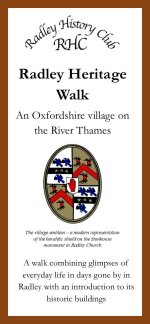One of Oxfordshire’s brightest botanical jewels
On 8 November Timothy Walker described the Arboretum’s history from (about) 1712 until 2014, the end of his stint as Director of the Oxford Botanic Garden and Harcourt Arboretum.
In 1710 Sir Simon Harcourt had acquired the Nuneham estate, probably as an investment. His grandson Simon, the first Earl Harcourt, decided to live there, and organized the removal of the then village to its present site along the main road. In 1777 he drowned while rescuing his favourite dog from a well. George, the second Earl, enthusiastically continued laying out the gardens near Nuneham House, with notable herbaceous borders and a new ornamental church (whose dome is prominently visible from several places in Radley).
The earldom died out, and the estate passed to Edward Vernon-Harcourt, archbishop of York, and, in 1861, to one of his sons, William Vernon Harcourt, a clergyman with a keen interest in chemistry. William, working with Charles Daubeny, professor of Botany at Oxford (and saviour of the Botanic Garden) began laying out the Arboretum, planting many oaks and limes, expensively imported redwoods, and rhododendrons along a serpentine path.
In 1904 the estate briefly passed to Sir William Harcourt, who as Liberal Chancellor of the Exchequer in 1894 had reformed and increased estate duties. They may have been a factor in his grandson Viscount Harcourt’s decision in 1948 to sell the estate to the University of Oxford.
Initially the University saw the land as a source of income from forestry. In the 1960s the University proposed to sell it. Cyril Darlington, Professor of Botany, had to campaign for the Arboretum to become an adjunct to the Botanic Garden. From then on the Arboretum has been continually improved and enriched, and now includes two colourful wildflower meadows and a richly stocked pond.
Timothy Walker illustrated his talk with pictures of favourite trees, and revealed some of his pet hates, including the resident feral peafowl, squirrels, and people who trample the bluebells in order to pick the white ones. He described a trip to Heathrow to collect some palm trees from David Mulholland.
In an answer to questions after his talk, Timothy Walker confirmed that the effects of climate heating are visible at the Arboretum in earlier springs and later autumns, and more frequent extreme events such as the great gale of January 1990.
